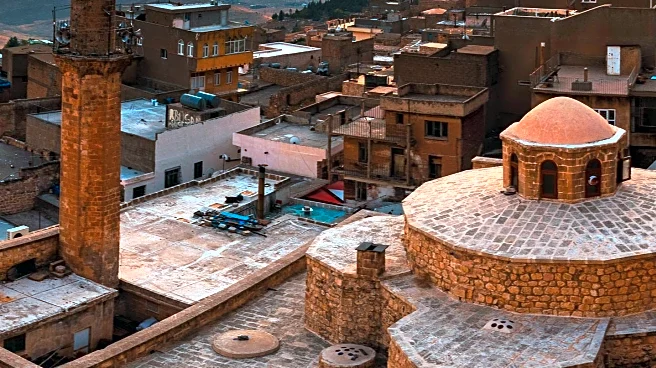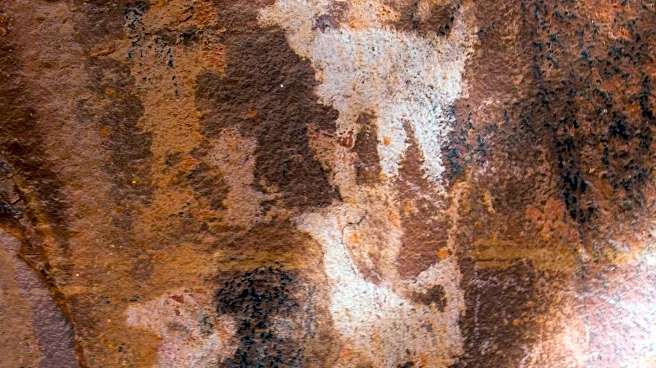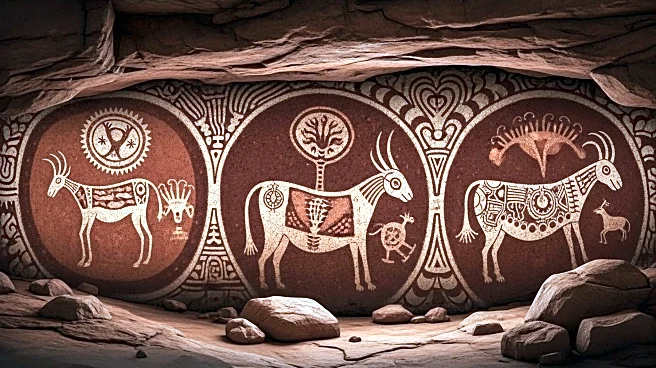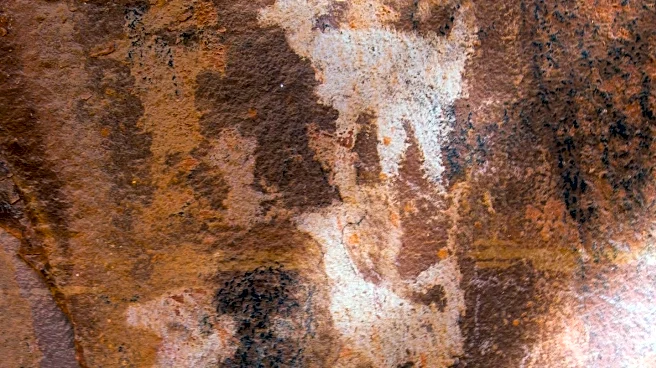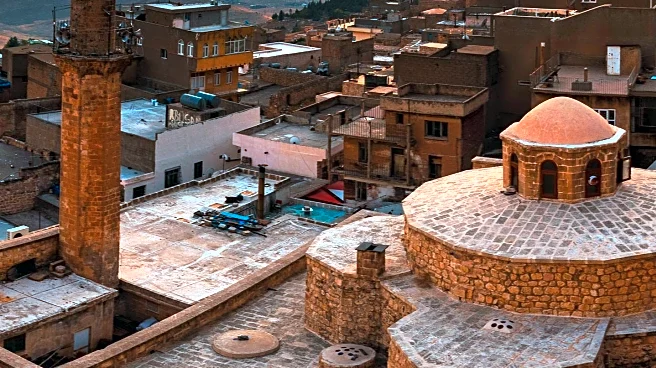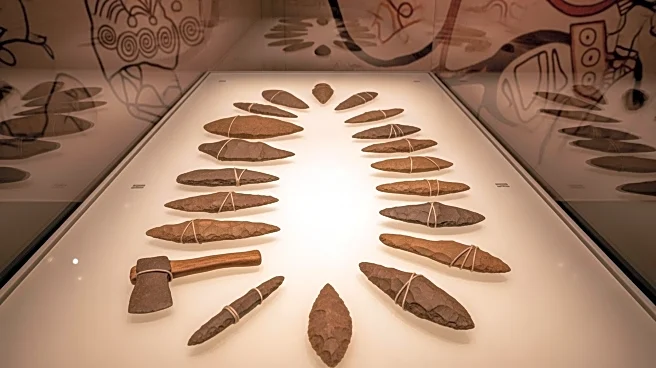What's Happening?
Archaeologists have uncovered a 12,000-year-old human-shaped statue embedded within a wall at Göbekli Tepe, the world's oldest known temple complex located in southeastern Turkey. The discovery was made during restoration work between Structures B and D, two of the site's main enclosures. The statue retains its head and torso but is missing its feet, which may be due to intentional modification or erosion over centuries. This finding provides new insights into the spiritual and ceremonial practices of early settled communities. Göbekli Tepe, known for its monumental T-shaped limestone pillars, has been part of the UNESCO World Heritage list since 2018 and continues to reshape scholarly understanding of early human civilization. The statue's positioning within the wall suggests a ceremonial purpose, possibly serving as a guardian figure or votive offering. Excavation director Professor Necmi Karul revealed the finding during a visit by Princess Akiko of Mikasa from Japan, highlighting the site's ongoing cultural engagement.
Why It's Important?
The discovery of the human figure at Göbekli Tepe is significant as it adds to the growing archaeological evidence that the site served a spiritual function rather than a domestic one. This finding enhances understanding of Neolithic rituals and the symbolic world of early human communities. The statue's integration into structural architecture suggests a belief in its ongoing spiritual presence, aligning with broader Neolithic patterns observed in the region. Göbekli Tepe's inclusion in the UNESCO World Heritage list has led to coordinated international conservation efforts, involving over 200 researchers. The site is a shared heritage of humanity, attracting global attention and promoting cultural engagement through exhibitions and visitor facilities.
What's Next?
Turkey is preparing to open new visitor facilities by late 2025, including a dedicated center and redesigned access paths to balance growing tourism with site protection. These updates aim to accommodate increasing public interest in Göbekli Tepe without compromising its integrity. The site will continue to be promoted through global exhibitions, with a new showcase scheduled to open in February 2026 at Berlin's James-Simon Gallery, featuring artifacts from the Şanlıurfa Museum.
Beyond the Headlines
The discovery at Göbekli Tepe highlights the ethical and cultural dimensions of preserving ancient sites while accommodating modern tourism. The site's ongoing conservation efforts reflect a commitment to maintaining its integrity as a shared heritage of humanity. The integration of symbolic figures within sacred spaces offers insights into early societies' use of religious symbolism and organized gathering, contributing to a deeper understanding of Neolithic belief systems.

